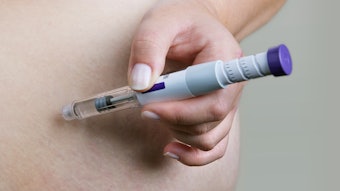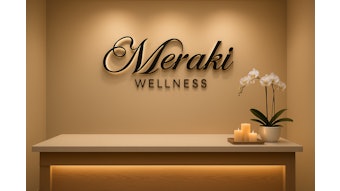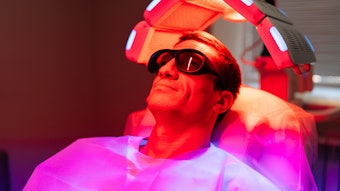
Kim Nichols, MD, FAAD has practiced medical and cosmetic dermatology for over 20 years. She has seen skin needs evolve with trends and lifestyle changes, especially as an increasing number of patients use GLP-1 medications for weight loss. As her specialty lies in developing personalized treatment plans that address skin health from the inside out, she has adopted modalities, such as Hydrafacial, to help address an array of GLP-1 induced skin concerns.
 Kim Nichols, MD, FAADCourtesy of Kim Nichols, MD, FAAD
Kim Nichols, MD, FAADCourtesy of Kim Nichols, MD, FAAD
We sat down with Nichols to learn how Hydrafacial, a skin health treatment regimen in her practice, has helped proactively address the anticipated skin changes due to rapid weight loss from GLP-1 use.
What impact have you observed in your patients' skin, particularly regarding laxity and volume, as a result of GLP-1 use? What are the most common skin-related concerns they share with you?
The most noticeable impact is a rapid reduction in facial volume, especially in the cheeks and under-eye area, which creates a more sunken, aged appearance. Skin laxity also increases as fat stores beneath the skin diminish, leading to folds and sagging that many weren’t expecting.
Have you noticed a trend of new patients seeking aesthetic treatments for the first time due to skin changes caused by GLP-1 medications? How should professionals in the industry approach this emerging demographic?
Yes, there’s a definite trend. We’re seeing first-time aesthetic patients who previously didn’t prioritize skincare or cosmetic procedures but are now motivated by the skin-related changes that accompany their weight loss. It’s important for us as dermatologists to approach this patient-type with education and empathy. Many are still unfamiliar with options and need guidance, not just a single solution.
Do you believe that individuals starting GLP-1 therapy should implement proactive skincare regimens from day one, and if so, why?
Definitely! Starting early allows us to maintain skin integrity and stimulate collagen before significant volume loss occurs. Think of it like preventive maintenance, the sooner we address hydration, elasticity and tone, the better we can preserve a youthful look throughout the weight loss journey.
What led you to incorporate Hydrafacial treatments into your protocol for addressing skin concerns associated with GLP-1 use?
Hydrafacial was a natural fit for my practice because of its multi-functional capabilities. The treatment provides deep hydration, promotes cellular turnover, and helps support the skin’s natural barrier which results in the skin feeling firm. These are all essential elements for combatting the effects of rapid volume loss. It’s also gentle enough for patients at any stage of their aesthetic journey.
 Unretouched before and after photos of Kim Nichols, MD, FAAD patient following eight months of GLP-1 medication and monthly Hydrafacial treatments.Courtesy of Hydrafacial
Unretouched before and after photos of Kim Nichols, MD, FAAD patient following eight months of GLP-1 medication and monthly Hydrafacial treatments.Courtesy of Hydrafacial
Hydrafacial works through a unique vortex-fusion technology that exfoliates, helps to clear impurities and infuses the skin with targeted serums. When the treatment is paired with boosters that help promote the skin’s natural ability to produce collagen and improve skin elasticity, such as peptides or growth factors, it becomes a powerful tool for improving how firm the skin looks and feels and its overall tone. While it doesn’t replace volume like injectables, it enhances skin quality so that results from other treatments are more natural-looking, lending itself to our hashtag, #NaturalAtNichols.
Why is it crucial for a patient to begin Hydrafacial treatments as soon as they begin GLP-1 use? How does this early intervention compare to starting treatment after completing GLP-1 use?
Early intervention is key. Addressing skin health in tandem with weight loss helps us maintain collagen and hydration levels, which can prevent the more drastic changes we see post-GLP-1. We tend to see that patients who start treatments early often require fewer corrective procedures later, and their skin tends to rebound more effectively.
 Hydrafacial works through a unique vortex-fusion technology that exfoliates, helps to clear impurities and infuses the skin with targeted serums.Courtesy of Hydrafacial
Hydrafacial works through a unique vortex-fusion technology that exfoliates, helps to clear impurities and infuses the skin with targeted serums.Courtesy of Hydrafacial
Absolutely. Hydrafacial treatments prepare the skin, which helps improve its receptivity to other treatments. When the skin is well-hydrated and exfoliated, injectables are more likely to settle more evenly, and laser treatments can penetrate more effectively. It’s a synergistic relationship. Hydrafacial treatments enhance results while also helping maintain them between sessions.
Since you’ve started integrating Hydrafacial treatments with your GLP-1 patients, how frequently do you recommend these treatments, and what long-term benefits have you observed in terms of prevention and skin improvement?
I typically recommend monthly Hydrafacial treatments, though we tailor it based on the patient’s needs and stage in their weight loss journey. Long-term, we’ve observed improved skin texture, reduced dullness and better resilience. Patients also report that their skin feels stronger and more youthful, even as their facial structure evolves.
What advice would you offer other dermatologists who are looking to help patients manage the skin changes caused by GLP-1 medications?
Be proactive, not reactive. Create comprehensive, customized plans that combine prevention and correction. Tools like Hydrafacial treatments can play a crucial role in early care, while injectables and lasers can address more specific concerns. Education is also key! Help patients understand what to expect and how to navigate the changes.
As the industry evolves in response to the growing number of GLP-1 users, what changes do you anticipate in treatment protocols or the types of services offered in aesthetic practices?
We’re already seeing a shift toward more holistic, multi-modality approaches. Practices are expanding their offerings to include supportive treatments like Hydrafacial earlier in the aesthetic timeline. I also anticipate more emphasis on regenerative treatments that rebuild collagen and skin structure naturally, as well as patient education to promote proactive care from the start. Look good, feel good, right?
Disclaimer:
The above paid-for content was produced by and posted on behalf of the Sponsor. Content provided is generated solely by the Sponsor or its affiliates, and it is the Sponsor’s responsibility for the accuracy, completeness and validity of all information included. Skin Inc. takes steps to ensure that you will not confuse sponsored content with content produced by Skin Inc. and governed by its editorial policy.










